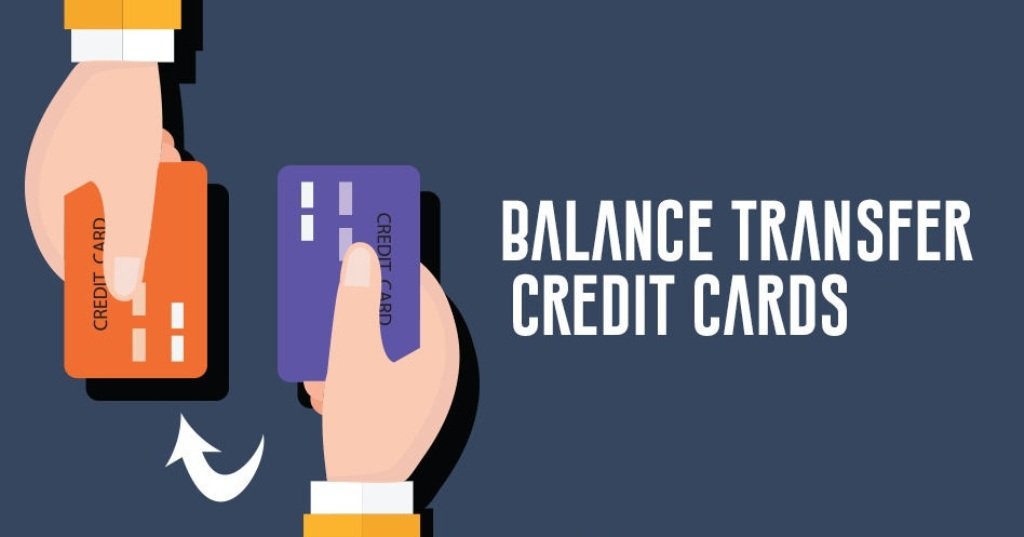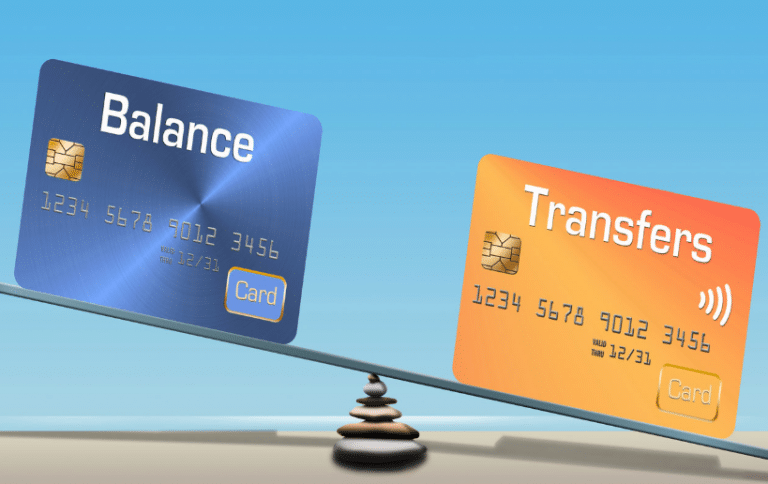
Citibank credit balance transfer presents a compelling solution for individuals seeking to streamline their debt management and potentially save on interest payments. By consolidating multiple credit card balances onto a single Citibank card, borrowers can benefit from lower interest rates, potentially reducing their monthly payments and accelerating their debt repayment journey.
This comprehensive guide explores the ins and outs of Citibank credit balance transfers, encompassing eligibility criteria, the transfer process, associated fees and interest rates, alternative options, and expert tips for maximizing your financial gains.
Citibank Credit Balance Transfer Overview
A Citibank credit balance transfer is a process that allows you to move an outstanding balance from another credit card to a Citibank credit card. This can be a useful tool for consolidating debt and potentially saving money on interest charges.
Citibank credit balance transfers offer a number of potential benefits, including:
Benefits of a Citibank Credit Balance Transfer
- Lower Interest Rates: Citibank often offers introductory interest rates on balance transfers that are lower than the interest rates on your existing credit cards. This can save you money on interest charges over time.
- Simplified Debt Management: By consolidating multiple credit card balances into one, you can simplify your debt management process and make it easier to track your payments.
- Potential for Credit Score Improvement: By reducing your overall credit utilization ratio (the amount of credit you are using compared to your total credit limit), a balance transfer can potentially improve your credit score.
However, there are also some potential drawbacks to consider before transferring a balance to Citibank.
Potential Drawbacks of a Citibank Credit Balance Transfer
- Balance Transfer Fees: Citibank may charge a fee for transferring a balance, which can range from a percentage of the transferred balance to a flat fee. This fee can reduce the potential savings you may realize from a lower interest rate.
- Introductory Rate Period: The lower interest rate on a balance transfer is usually only valid for a limited time, often 6 to 18 months. After the introductory period, the interest rate will revert to the standard rate for the Citibank credit card.
- Impact on Credit Utilization: While a balance transfer can potentially improve your credit score by lowering your credit utilization ratio, it can also have the opposite effect if you continue to make new purchases on the Citibank card. This can increase your overall credit utilization ratio, potentially negatively impacting your credit score.
Eligibility and Requirements

To qualify for a Citibank credit balance transfer, you need to meet certain criteria and provide necessary documents.
Eligibility for a Citibank credit balance transfer is determined by your creditworthiness and financial history.
Credit Score Requirements
A good credit score is essential for approval. Citibank typically requires a minimum credit score of 670 or higher for balance transfer offers.
Required Documents
The following documents are usually required for a Citibank credit balance transfer application:
- Valid Identification: This can be a driver’s license, passport, or government-issued ID card.
- Social Security Number: This is needed to verify your identity and credit history.
- Proof of Income: You may need to provide pay stubs, tax returns, or bank statements to demonstrate your income.
- Existing Credit Card Statement: This will show the balance you wish to transfer.
- Bank Account Information: Citibank will need your bank account details to deposit the transferred balance.
Transfer Process
The transfer process is straightforward and involves a few simple steps. You can initiate the transfer online, over the phone, or through a Citibank branch. This section will Artikel the step-by-step process for transferring your credit balance to Citibank.
Step-by-Step Guide
This guide provides a comprehensive breakdown of the steps involved in transferring your credit balance to Citibank.
- Apply for a Citibank Credit Card: Begin by applying for a Citibank credit card that offers a balance transfer option. You can apply online, over the phone, or at a Citibank branch. When applying, be sure to select the balance transfer option and specify the amount you want to transfer.
- Receive Approval and Transfer Offer: Once your application is approved, Citibank will provide you with a balance transfer offer, which will include the transfer amount, interest rate, and any applicable fees. Review the offer carefully and ensure it aligns with your financial goals.
- Provide Information from Previous Creditor: To facilitate the transfer, you will need to provide Citibank with the account information from your previous creditor, including the account number and current balance.
- Citibank Initiates Transfer: After receiving the required information, Citibank will initiate the transfer process. This typically involves contacting your previous creditor to confirm the transfer amount and request the funds.
- Transfer Completion: Once the transfer is complete, you will receive a confirmation from Citibank. The transferred balance will appear on your new Citibank credit card statement.
Transfer Process Flowchart
The transfer process can be visualized using a flowchart. This flowchart depicts the sequence of events involved in transferring your credit balance to Citibank.
[Insert flowchart here]
The flowchart illustrates the steps involved in the transfer process, starting with applying for a Citibank credit card and ending with the transfer completion.
Transfer Timeline
The timeframe for completing a balance transfer can vary depending on the complexity of the process. However, it typically takes between 10 to 15 business days.
The transfer timeline is influenced by factors such as the amount being transferred, the processing time of the previous creditor, and the efficiency of Citibank’s transfer process.
Fees and Interest Rates
When transferring a credit card balance, it’s crucial to understand the associated fees and interest rates. These factors can significantly impact the overall cost of your balance transfer.
Balance Transfer Fees
Balance transfer fees are charged by credit card issuers for moving a balance from another credit card to theirs. These fees can vary depending on the issuer, the amount transferred, and any promotional offers.
Here’s a comparison of balance transfer fees charged by some major credit card providers, including Citibank:
| Issuer | Balance Transfer Fee |
|---|---|
| Citibank | 3% of the balance transferred, minimum $5 |
| Chase | 3% of the balance transferred, minimum $5 |
| Bank of America | 3% of the balance transferred, minimum $5 |
| Capital One | 3% of the balance transferred, minimum $5 |
It’s essential to consider the balance transfer fee when comparing offers from different credit card issuers.
Interest Rates on Balance Transfers
The interest rate applied to a balance transfer can vary depending on the credit card issuer and your creditworthiness.
Citibank typically offers a promotional interest rate for a specific period on balance transfers. This promotional rate is usually lower than the standard interest rate on the credit card. After the promotional period expires, the standard interest rate will apply.
For example, Citibank may offer a 0% introductory APR for 12 months on balance transfers. After the 12-month period, the standard APR for the card will apply.
Promotional Periods and Interest Rates
Promotional periods are designed to attract new customers and encourage them to transfer their balances. They offer a temporary lower interest rate, which can save you money on interest charges during the promotional period. However, it’s crucial to understand that the promotional period is finite, and once it expires, the standard interest rate will apply.
It’s important to make sure you can pay off the balance transferred before the promotional period ends to avoid accruing interest at the higher standard rate.
Alternative Options

Citibank balance transfers offer a convenient way to consolidate debt and potentially save on interest. However, it’s essential to consider other options before deciding.
This section explores alternative debt consolidation strategies, providing insights into their advantages, disadvantages, and suitability for various financial situations.
Debt Consolidation Loans
Debt consolidation loans are another popular option for combining multiple debts into a single loan with a lower interest rate. They can be obtained from banks, credit unions, or online lenders.
- Advantages:
- Lower interest rates: Consolidating debt into a lower-interest loan can save you money on interest payments.
- Simplified payments: You’ll only have one monthly payment to track instead of multiple ones.
- Improved credit score: Making on-time payments on a consolidation loan can help boost your credit score.
- Disadvantages:
- Higher interest rates: If you have poor credit, you may qualify for a higher interest rate than a balance transfer.
- Origination fees: Some lenders charge origination fees, which can add to the overall cost of the loan.
- Extended repayment term: A longer repayment term can result in paying more interest over time.
Debt Management Plans
Debt management plans are programs offered by non-profit credit counseling agencies. These plans help you negotiate lower interest rates and monthly payments with your creditors.
- Advantages:
- Lower interest rates and payments: Credit counselors can negotiate lower interest rates and monthly payments with your creditors.
- Financial education: Credit counseling agencies provide financial education and budgeting support.
- Protection from creditors: Once you enroll in a debt management plan, your creditors are generally prohibited from contacting you directly.
- Disadvantages:
- Fees: Credit counseling agencies typically charge fees for their services.
- Negative impact on credit score: A debt management plan can negatively impact your credit score, as it may appear as a closed account on your credit report.
- Limited availability: Not all creditors participate in debt management plans.
Balance Transfer Credit Cards
Balance transfer credit cards offer a temporary 0% interest rate on transferred balances for a specific period. This can be a good option if you need time to pay down your debt without accruing interest.
- Advantages:
- 0% interest rate: You can avoid paying interest on your transferred balance for a set period.
- Lower monthly payments: A 0% interest rate can reduce your monthly payments.
- Potential rewards: Some balance transfer credit cards offer rewards programs.
- Disadvantages:
- Balance transfer fees: Most balance transfer credit cards charge a fee for transferring balances, typically a percentage of the amount transferred.
- High interest rate after introductory period: Once the introductory period ends, the interest rate can revert to a much higher rate.
- Limited availability: Not everyone qualifies for a balance transfer credit card.
Debt Settlement
Debt settlement involves negotiating with creditors to pay off your debt for a lower amount than what you owe. This option is typically used by people who are struggling to make their payments and are considering bankruptcy.
- Advantages:
- Lower debt amount: You can pay off your debt for less than the original amount owed.
- Potential for faster debt repayment: You can potentially pay off your debt faster with a lower payment amount.
- Disadvantages:
- Negative impact on credit score: Debt settlement can severely damage your credit score.
- Fees: Debt settlement companies typically charge fees for their services.
- Potential legal issues: Negotiating with creditors on your own can be risky and could lead to legal issues.
Home Equity Loan, Citibank credit balance transfer
A home equity loan is a secured loan that uses your home’s equity as collateral. It can be a good option for consolidating debt if you have significant equity in your home and a good credit score.
- Advantages:
- Lower interest rates: Home equity loans typically have lower interest rates than unsecured loans.
- Large loan amounts: You can borrow a significant amount of money with a home equity loan.
- Tax deductibility: Interest paid on home equity loans is often tax-deductible.
- Disadvantages:
- Risk of foreclosure: If you default on a home equity loan, you could lose your home.
- High interest rates: If you have poor credit, you may qualify for a higher interest rate.
- Closing costs: Home equity loans typically have closing costs, which can add to the overall cost of the loan.
Personal Loans
Personal loans are unsecured loans that can be used for various purposes, including debt consolidation. They are available from banks, credit unions, and online lenders.
- Advantages:
- Flexible terms: Personal loans offer flexible repayment terms.
- No collateral required: Personal loans are unsecured, meaning you don’t have to put up any collateral.
- Fast approval: Personal loans can be approved quickly.
- Disadvantages:
- Higher interest rates: Personal loans typically have higher interest rates than secured loans.
- Origination fees: Some lenders charge origination fees.
- Limited loan amounts: Personal loans typically have lower loan limits than home equity loans.
Tips for Successful Transfer
A balance transfer can be a powerful tool for saving money on interest charges and paying down debt faster. However, to maximize the benefits of a balance transfer, it’s crucial to understand the intricacies of the process and implement strategies that ensure a smooth and successful transition.
Choosing the Right Transfer Offer
- Compare Interest Rates and Fees: Before transferring your balance, compare interest rates and fees offered by different lenders. Look for a low introductory APR (Annual Percentage Rate) and minimal transfer fees. Consider using a balance transfer calculator to estimate potential savings.
- Understand the Terms and Conditions: Carefully read the terms and conditions of the balance transfer offer. Pay attention to the introductory APR period, the standard APR after the introductory period, and any restrictions on the types of debt eligible for transfer. For instance, some offers may exclude certain types of debt, such as cash advances or balances from other Citibank cards.
- Consider the Minimum Payment: Ensure you can afford the minimum monthly payment on the transferred balance, even after the introductory period ends. Failure to make timely payments could result in penalties and a higher APR.
Avoiding Potential Pitfalls
- Timely Transfer: Complete the balance transfer within the specified timeframe to avoid missing the introductory APR period.
- Avoid New Charges: After transferring your balance, avoid adding new charges to the transferred card. New charges will accrue interest at the standard APR, negating the benefits of the balance transfer.
- Check Your Credit Score: A balance transfer can impact your credit score, especially if it increases your overall credit utilization. Before applying, check your credit score and understand how the transfer might affect it.
Managing Debt After a Successful Transfer
- Develop a Budget: Create a realistic budget that accounts for your minimum payments on all your debts, including the transferred balance. Stick to your budget to avoid overspending and accruing more debt.
- Prioritize Debt Payments: Prioritize paying down the transferred balance as quickly as possible. Consider making extra payments to reduce the principal amount and minimize interest charges.
- Avoid Using the Transferred Card: Resist the temptation to use the transferred card for new purchases. This will only add to your debt and undermine your efforts to pay it off.
Case Studies
Citibank balance transfers can be a valuable tool for individuals looking to consolidate debt and save money on interest charges. To illustrate the potential benefits, here are some real-world examples of how individuals have successfully used Citibank balance transfers to improve their financial situations.
Case Study 1: Consolidating High-Interest Debt
This case study focuses on an individual who successfully used a Citibank balance transfer to consolidate high-interest debt. The individual, let’s call them Sarah, had accumulated significant credit card debt over time, with interest rates ranging from 18% to 24%. Sarah was struggling to make minimum payments on all her cards, and the interest charges were accumulating rapidly.
- Sarah researched Citibank’s balance transfer offers and found a card with a 0% introductory APR for 18 months. She transferred the balances from her high-interest credit cards to the Citibank card, saving a significant amount on interest charges during the introductory period.
- Sarah then focused on paying down the balance on the Citibank card, making more than the minimum payment each month. By the end of the 18-month introductory period, Sarah had paid off a substantial portion of her debt.
- Once the introductory period ended, Sarah’s interest rate increased to the standard APR for the card, but it was still significantly lower than the rates on her previous credit cards. Sarah continued to make regular payments, and she was able to pay off the remaining balance within a few months.
By consolidating her high-interest debt into a Citibank balance transfer card, Sarah saved thousands of dollars in interest charges and was able to pay off her debt much faster than she would have been able to otherwise.
Case Study 2: Lowering Monthly Payments
This case study focuses on an individual who successfully used a Citibank balance transfer to lower their monthly payments. The individual, let’s call them John, had multiple credit cards with high balances and minimum payments that were straining his budget.
- John found a Citibank balance transfer card with a low introductory APR and a longer repayment period. He transferred the balances from his other credit cards to the Citibank card, which reduced his minimum monthly payments.
- John was able to free up some cash flow by lowering his monthly payments, which he used to pay down other debts or save for future expenses.
- John also benefited from the lower interest rate on the Citibank card, which helped him pay off the balance more quickly.
By consolidating his credit card debt into a Citibank balance transfer card with a lower interest rate and a longer repayment period, John was able to lower his monthly payments and improve his overall financial situation.
Ending Remarks: Citibank Credit Balance Transfer

Navigating the world of credit card debt can be daunting, but understanding the intricacies of Citibank credit balance transfers empowers you to make informed decisions. Whether you’re seeking to consolidate high-interest debt, streamline your monthly payments, or simply explore a more efficient debt management strategy, this guide provides the insights you need to embark on a path towards financial freedom. Remember, taking control of your finances is a journey, and Citibank credit balance transfers can be a valuable tool along the way.
FAQ Insights
What is the maximum amount I can transfer with a Citibank credit balance transfer?
The maximum amount you can transfer depends on your available credit limit on your new Citibank card.
How long does it take for a Citibank credit balance transfer to be processed?
The processing time for a Citibank credit balance transfer can vary, but it typically takes 7-10 business days.
Are there any fees associated with a Citibank credit balance transfer?
Yes, Citibank may charge a balance transfer fee, which is typically a percentage of the transferred amount.
Can I transfer a balance from a non-Citibank credit card to a Citibank card?
Yes, you can typically transfer balances from other credit cards to a Citibank card, as long as the other card issuer allows balance transfers.
What happens if I don’t make my minimum payments on my Citibank credit balance transfer?
If you don’t make your minimum payments, you may incur late fees and your interest rate could increase.





